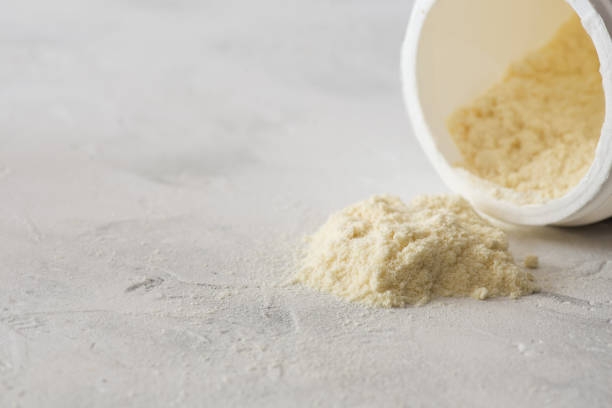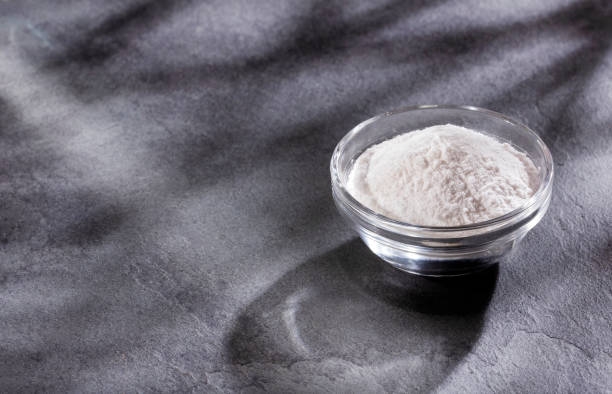Can Natural Ferulic Acid Powder Promote Muscle Growth?
2024-01-30 13:53:04
What is Natural Ferulic Acid Powder?
Natural Ferulic Acid Powder is a natural compound that can be found in many plants, especially in cereals, fruits, and vegetables. It has been widely studied for its antioxidant, anti-inflammatory, and anti-cancer properties. But did you know that ferulic acid can also promote muscle growth? In this article, we will explore how ferulic acid can enhance the hypertrophy of fast skeletal muscle fibers, which are responsible for strength and power movements.

What are fast skeletal muscle fibers?
Skeletal muscle is composed of different types of fibers, which can be classified according to their myosin heavy chain (MyHC) isoforms, metabolic characteristics, and contractile properties. There are four main types of muscle fibers in mammals: type I (slow oxidative), type IIa (fast oxidative), type IIx (intermediate), and type IIb (fast glycolytic). Type I fibers have high oxidative capacity, low glycolytic capacity, and low contractile speed and force. They are mainly involved in endurance activities, such as long-distance running. Type IIb fibers have low oxidative capacity, high glycolytic capacity, and high contractile speed and force. They are mainly involved in explosive activities, such as sprinting or jumping. Type IIa and type IIx fibers have intermediate characteristics between type I and type IIb fibers.
Muscle fiber type composition is determined by genetic factors, but it can also be influenced by environmental factors, such as exercise, nutrition, hormones, and aging. Muscle fiber type can change from one type to another through the process of fiber type transition, which involves the expression of different MyHC isoforms. For example, endurance training can induce a shift from type IIb to type IIa fibers, while resistance training can induce a shift from type IIa to type IIb fibers. Muscle fiber type transition is regulated by various molecular mechanisms, such as transcription factors, signaling pathways, and epigenetic modifications.
How does ferulic acid affect muscle fiber type?
Natural Ferulic Acid Powder is a polyphenolic compound that can modulate muscle fiber type formation through its effects on mitochondrial function, oxidative stress, and gene expression. Several studies have shown that ferulic acid can improve mitochondrial function by increasing the activity of enzymes involved in the tricarboxylic acid cycle (TCA) and the electron transport chain (ETC), such as succinate dehydrogenase (SDH) and cytochrome c oxidase (COX). Mitochondrial function is essential for the functioning of oxidative myofibers, such as type I and type IIa fibers. Ferulic acid can also reduce oxidative stress by scavenging reactive oxygen species (ROS) and increasing the expression of antioxidant enzymes, such as superoxide dismutase (SOD) and catalase (CAT) . Oxidative stress can impair muscle function and induce muscle atrophy.
Moreover, ferulic acid can regulate the expression of genes involved in muscle fiber type formation, such as myogenic transcription factors and sarcomeric unit proteins. Myogenic transcription factors are proteins that control the differentiation and development of muscle cells. They include MyoD, myogenin, myocyte enhancer factor 2C (MEF2C), and serum response factor (SRF). Sarcomeric unit proteins are proteins that form the contractile apparatus of muscle cells. They include MyHC isoforms, skeletal alpha-actin, tropomyosin, and troponin I. Ferulic acid has been shown to increase the mRNA and protein levels of MyoD, myogenin, MEF2C, SRF, MyHC I, MyHC IIa, skeletal alpha-actin, tropomyosin, and troponin I in mouse C2C12 myotubes. These changes indicate a shift from fast glycolytic to fast oxidative muscle fiber phenotype.
What is the molecular mechanism of ferulic acid action?
The molecular mechanism by which ferulic acid regulates muscle fiber type formation involves the activation of the sirtuin 1 (Sirt1)/AMP-activated protein kinase (AMPK) signaling pathway. Sirt1 is a NAD±dependent deacetylase that modulates various cellular processes, such as metabolism, inflammation, and aging. AMPK is a key energy sensor that regulates cellular energy homeostasis by stimulating catabolic pathways and inhibiting anabolic pathways. Sirt1 and AMPK can interact with each other and form a positive feedback loop to enhance their activities.
Ferulic acid has been reported to increase the expression and activity of Sirt1 in various tissues, such as liver, adipose tissue, and skeletal muscle. Ferulic acid can also increase the phosphorylation and activation of AMPK and its downstream targets, such as liver kinase B1 (LKB1), p70 ribosomal S6 kinase (p70S6K), and eukaryotic translation initiation factor 4E-binding protein 1 (4E-BP1) . These effects of ferulic acid are attenuated by the inhibition or knockdown of Sirt1 or AMPK, suggesting that Sirt1 and AMPK are required for ferulic acid action.
The activation of the Sirt1/AMPK signaling pathway by ferulic acid can regulate muscle fiber type formation by modulating the expression of myogenic transcription factors and sarcomeric unit proteins. Sirt1 can directly deacetylate and activate MyoD, myogenin, MEF2C, and SRF, thereby enhancing their transcriptional activity. AMPK can phosphorylate and inhibit p70S6K and 4E-BP1, thereby reducing protein synthesis and promoting a shift from fast glycolytic to fast oxidative muscle fiber phenotype. AMPK can also phosphorylate and activate PGC-1α, a coactivator of nuclear receptors that regulate mitochondrial biogenesis and oxidative metabolism.

How can ferulic acid promote muscle growth?
Muscle growth is the result of the balance between muscle protein synthesis and muscle protein degradation. Muscle protein synthesis is the process of creating new muscle proteins from amino acids, while muscle protein degradation is the process of breaking down existing muscle proteins into amino acids. Muscle growth occurs when muscle protein synthesis exceeds muscle protein degradation.
Ferulic acid can promote muscle growth by stimulating muscle protein synthesis and inhibiting muscle protein degradation. Ferulic acid can increase the expression and activity of mTOR (mammalian target of rapamycin), a master regulator of protein synthesis. mTOR can phosphorylate and activate p70S6K and 4E-BP1, which are involved in the initiation and elongation of mRNA translation. Ferulic acid can also increase the expression and activity of insulin-like growth factor 1 (IGF-1), a potent anabolic hormone that stimulates mTOR signaling. Ferulic acid can also decrease the expression and activity of the ubiquitin-proteasome system (UPS) and autophagy-lysosome system (ALS), two major pathways of protein degradation. UPS involves the attachment of ubiquitin molecules to target proteins, which are then recognized and degraded by proteasomes. ALS involves the formation of autophagosomes that engulf cytoplasmic components, which are then fused with lysosomes for degradation.
In addition to its effects on protein metabolism, ferulic acid can also promote muscle growth by enhancing the hypertrophy of fast skeletal muscle fibers. Hypertrophy is the increase in the size of muscle cells due to the enlargement of their myofibrils, which are composed of sarcomeres. Sarcomeres are the basic functional units of muscle contraction, consisting of actin and myosin filaments. The number and size of sarcomeres determine the force-generating capacity of muscle cells. Ferulic acid can induce a shift from fast glycolytic to fast oxidative muscle fiber phenotype, which is associated with an increased number and size of sarcomeres. Ferulic acid can also increase the expression of sarcomeric unit proteins, such as MyHC isoforms, skeletal alpha-actin, tropomyosin, and troponin I, which are essential for sarcomere assembly and function.
Conclusion
Natural Ferulic Acid Powder is a natural compound that can promote muscle growth by enhancing the hypertrophy of fast skeletal muscle fibers. Ferulic acid can regulate muscle fiber type formation through the activation of the Sirt1/AMPK signaling pathway, which modulates the expression of myogenic transcription factors and sarcomeric unit proteins. Ferulic acid can also stimulate muscle protein synthesis and inhibit muscle protein degradation through the modulation of mTOR, IGF-1, UPS, and ALS. Ferulic acid may have potential applications as a functional food additive or a dietary supplement for improving muscle health and performance.
If you want to get more information about this powder, please contact us as follows:
E-mail: sales@sxytorganic.com
Phone: +8617795611310
Telephone: +86-029-86478251
Address: No. 10, Jinye 1st Road, Yanta District, Xi'an, Shaanxi, China.
References
1. Ong KW, Hsu A, Tan BK. Anti-diabetic and anti-lipidemic effects of chlorogenic acid are mediated by ampk activation. Biochem Pharmacol. 2013;85(9):1341-51.
2. Schiaffino S, Reggiani C. Fiber types in mammalian skeletal muscles. Physiol Rev. 2011;91(4):1447
_1737093401309.png)
